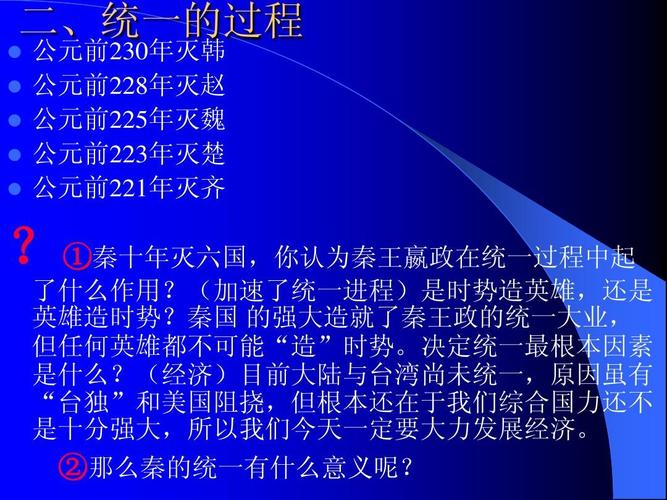
The Short-Lived Reign: Why Did the Qin Dynasty Fall After Only 15 Years?
While the Qin Dynasty (221-206 BCE) is credited with unifying China and establishing the first centralized empire, its reign was remarkably short-lived. Within fifteen years, the dynasty crumbled, paving the way for the subsequent Han Dynasty. This abrupt collapse was a result of a complex interplay of factors, primarily stemming from the Qin's own policies and the widespread discontent they generated.
Brutal Methods of Unification and Repression
The Qin Dynasty, under Qin Shi Huang, achieved unification through relentless military campaigns and ruthless political maneuvering. While effective in the short term, these methods sowed the seeds of resentment and instability.
- Military Conquests: The Qin armies were formidable, conquering six other states to unify China. However, these constant wars drained resources and left a legacy of bitterness and resentment among the conquered populations.
- Suppression of Dissent: Qin Shi Huang, obsessed with maintaining control, implemented a Legalist philosophy characterized by harsh laws and severe punishments. This created an atmosphere of fear and stifled intellectual discourse. The infamous "burning of books and burying of scholars" exemplified this brutal approach, aiming to eliminate opposing ideologies and consolidate power.
- Forced Labor and High Taxation: To fund his ambitious projects, like the Great Wall and elaborate mausoleum complex, Qin Shi Huang imposed crushing taxes and conscripted massive numbers of laborers. This exploitation led to widespread hardship and fueled popular discontent.
Qin Shi Huang’s Death and a Power Vacuum
The death of Qin Shi Huang in 210 BCE proved to be a turning point. His passing exposed the fragility of the empire built on fear and coercion.
- Succession Crisis: Qin Shi Huang's death sparked a power struggle within the court. The cunning eunuch Zhao Gao manipulated his way into a position of influence, orchestrating the death of the rightful heir and installing the inept Huhai, also known as Qin Er Shi (Second Emperor of Qin), as a puppet ruler.
- Weak Leadership: Qin Er Shi, lacking his father's political acumen and ruthlessness, was ill-equipped to handle the brewing unrest. Zhao Gao's manipulative control further weakened the imperial authority and paralyzed the government.
Uprising and Rebellion
With the Qin government weakened by internal strife and the populace burdened by oppression, rebellion erupted throughout the empire.
- Chen Sheng and Wu Guang's Uprising: In 209 BCE, two minor officials, Chen Sheng and Wu Guang, sparked a major uprising when they were delayed in reaching their posts and faced execution under the Qin's strict laws. This act of defiance resonated with the oppressed masses and ignited a wave of rebellions across China.
- Exploiting Weakness: The various rebellions, though initially fragmented, capitalized on the weakened state of the Qin army and the lack of strong leadership. Warlords, including Liu Bang (founder of the Han Dynasty) and Xiang Yu, rose to prominence, leading their forces against the crumbling Qin empire.
The Collapse
The Qin Dynasty, lacking the support of its people and crippled by internal power struggles, was ill-prepared to withstand the widespread rebellions.
- Military Defeats: The Qin armies, once seemingly invincible, suffered a series of decisive defeats against the rebel forces. The Battle of Julu in 207 BCE, where Xiang Yu outmaneuvered and crushed the main Qin army, marked a turning point, signifying the irreversible decline of the dynasty.
- Fall of the Capital and Death of Qin Er Shi: In 206 BCE, the rebel armies, led by Xiang Yu, captured and sacked the Qin capital of Xianyang. Qin Er Shi, manipulated into suicide by Zhao Gao, marked the end of the Qin dynasty.
Legacy of the Qin Dynasty
Though short-lived, the Qin Dynasty had a profound impact on Chinese history. It established the framework for a unified, centralized empire with standardized weights, measures, writing systems, and currency, laying the foundation for China's future imperial dynasties. However, the Qin's legacy is also one of caution, demonstrating the dangers of unrestrained autocracy, harsh rule, and the importance of maintaining the support of the populace.
Q&A
1. What was the main factor contributing to the Qin Dynasty's downfall?
While numerous factors contributed, the primary cause was the Qin's own policies. The brutal methods employed to achieve and maintain control, including high taxation, forced labor, and ruthless suppression of dissent, ultimately alienated the populace and fueled widespread rebellion.
2. How did the death of Qin Shi Huang contribute to the dynasty's collapse?
Qin Shi Huang's death created a power vacuum, leading to internal power struggles and weak leadership that paralyzed the government. This instability provided an opportunity for rebellion to flourish.
3. What lessons can be learned from the Qin Dynasty's rapid fall?
The Qin Dynasty serves as a historical lesson in the dangers of unchecked power, oppressive rule, and the importance of cultivating popular support. The Qin's reliance on fear and force, while effective in the short term, ultimately proved unsustainable and led to their downfall.
note: This return of all, without the author's permission, may not be reproduced